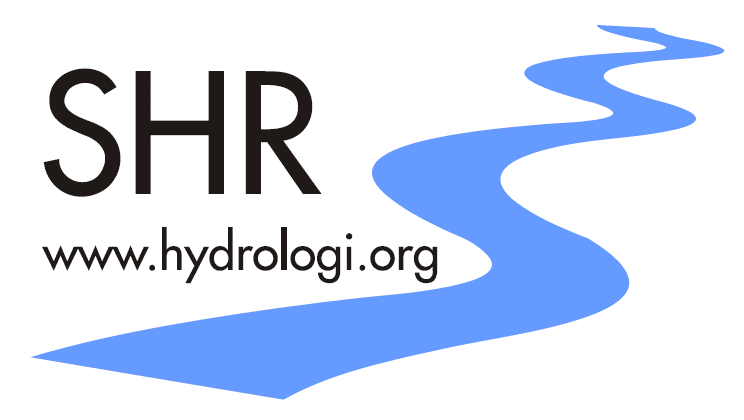Den 7 december 2023 arrangeras hydrologidagarna i SMHI lokaler på Folkborgsvägen 17, Norrköping.
9:00 Registration
9:15 Maria Elenius (SHR/SMHI) Welcome to Hydrologidagarna 2023 “Water Solutions”
Water solutions for the future
9:25 Berit Arheimer (IAHS/SMHI) – Keynote IAHS Science for Solutions Decade HELPING
9:45 Archana Sarkar (National Institute of Hydrology, India) – Towards solutions for the major hydrological issues in India
10:05 Joel Axelsson (KTH) – Production behavior of a system of small-scale hydropower plants subjected to historical climate fluctuations
10:25 Poster session with sandwich, including a one-sentence teaser per poster ☕ 🥪
New data for improved hydrological process understanding
11:10 Sophia Laporte (Umeå U) – Using seismic methods to understand seasonal river-ice processes: sediment transport, bank erosion, hydraulics
11:30 Mikael Lennermark (SMHI) – Measuring extreme flows from a short video
11:40 Ida Westerberg (IVL) Rapid streamflow monitoring with drones
11:50 Kevin Bishop (SLU) – What can SITES Water offer to an early career researcher
12:10 David Gustafsson (SMHI) – Tomorrow’s field visit – Interpretation of field data
12:30 Lunch 🥗🥕📸
Nature based solutions
13:30 Shirin Karimi (SLU) – Observed impact of rewetting on the hydrological function of a drained peatland in the boreal landscape
13:50 Marcus Cheuk Hei Tong (SLU) The carbon balance of recently rewetted forested peatland does not resemble that of a natural mire in boreal Sweden
14:10 Benjamin Fischer (Uppsala U) – Hydrological connectivity effects of forest management interventions measured with isotope hydrograph separation after clear cuts and wetland restoration
14:30 Poster session with fika ☕ 🍪
15:10 Karin Eklöf (SLU) – Wetland restorations: possibilities, challenges and uncertainties
15:30 Johan Kjellin (Tyréns AB) – Infiltration capacity modeling for evaluation of a nature-based solution
15:50 Benjamin Fischer (SHR/Uppsala U) – Thank you
16:00 SHR Meeting for member representatives
Posters
Andrea Popp (SMHI) Snow cover change impacts on greenhouse gas dynamics in alpine, sub-arctic catchments
Shirin Karimi (SLU) Observed impact of rewetting on the hydrological function of a drained peatland in the boreal landscape
Kristin Röja, Klara Lindqvist & Svea Bertolatus (SMHI) The hydrological forecasting and warning service at SMHI
Yiheng Du (SMHI) Quantile-based model evaluation
Reinert Huseby Karlsen, Ida Westerberg (IVL) Sharing perceptual models of uncertainty – on the use of soft information about discharge data uncertainty
Joel Axelsson (KTH) Production behavior of a system of small-scale hydropower plants subjected to historical climate fluctuations
David Gustafsson (SMHI) Water observations from satellites and drones – new data sources for hydrological and hydraulic modelling
Emma Lannergård (SLU) Development of extreme precipitation events and evaluation of their impacts on water quality
Maria Elenius (SMHI) Current data does not support using brown trout as a low-flow indicator species in Sweden
Anders Wörman (KTH) Pinhole groundwater discharge
Ursula McKnight (SMHI) Linking land-use to DOM dynamics and ecological quality through application of novel fluorescence technologies and ecological indicators
